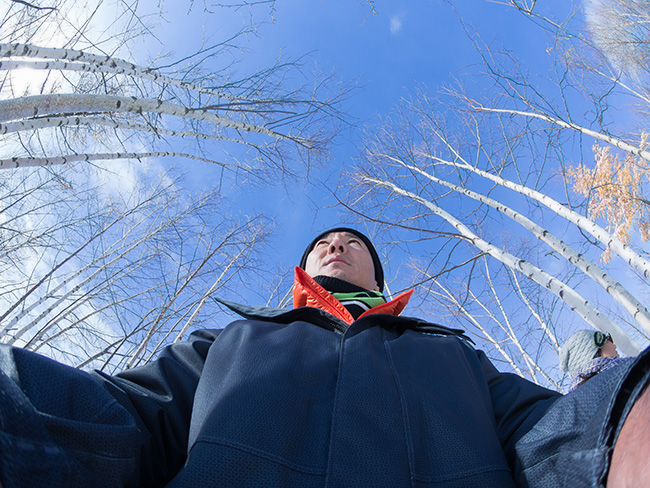I took a few days off last week and visited Hokkaido, the northernmost of Japan’s four main islands. It was my first time up there.
I’m usually not big on cold places, but after surviving the Arctic earlier this year, I figured I’m man enough to handle northern Japan (with about 15 layers of clothing, plus obligatory whinging, of course).
As it turned out, the first major snow of the winter hit shortly after I got to Biei (美瑛), which is in the interior of the island, i.e., no ocean.
Soft, powdery snow blanketed the area. It was overcast for much of the time I was in Hokkaido. Despite the cold, I went out exploring every day and even managed to take some photos, a few of which I thought I’d share.
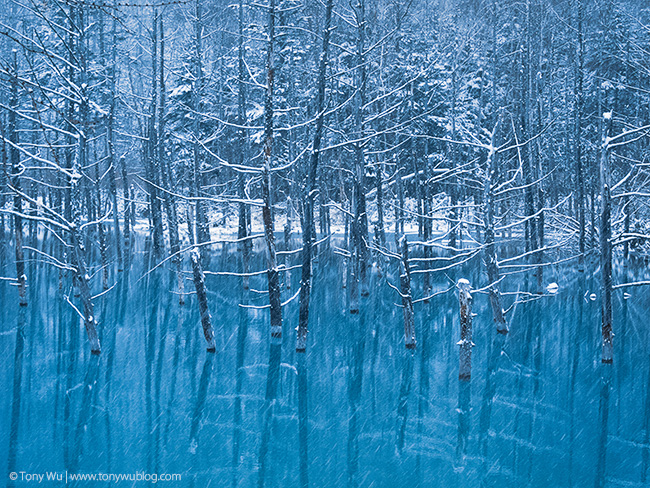
The first is a photo of blue pond (青い池), which is relatively famous, since a photo of this place was used as wallpaper by Apple. What most people don’t know is that the pond is manmade, not natural. It’s still cool though. I found out that the water looks most blue when the weather is cruddy, not when it’s nice out.
Anyway, it was snowing when I stopped there on the way from the airport to my accommodation. I didn’t feel like schlepping my heavy cameras through the slush and mud, so I took the photo above with a Canon S95.
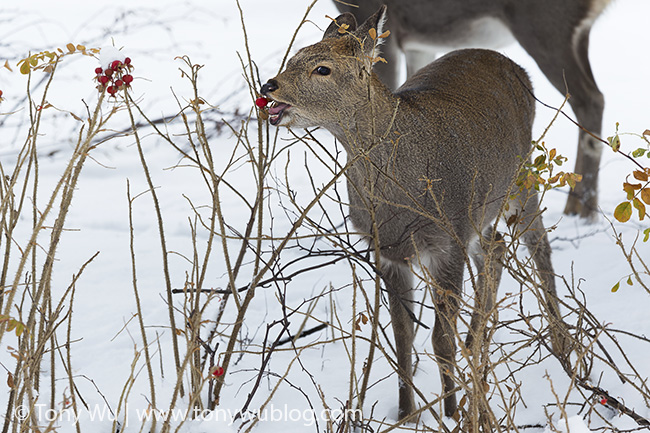
I met a couple of deer one day, both of which were small. I learned later from a guy on a construction site that the pair had been orphaned earlier in the year. Their presumed mother was hit by a vehicle, leaving them to fend for themselves. They were sort of skittish, but were busy looking for stuff to eat, so I was able to watch them for some time.
Hope they find enough food to make it through the winter.
Here’s a nice waterfall that was behind my hotel. It’s called Shirahige no Taki (白ひげの滝):
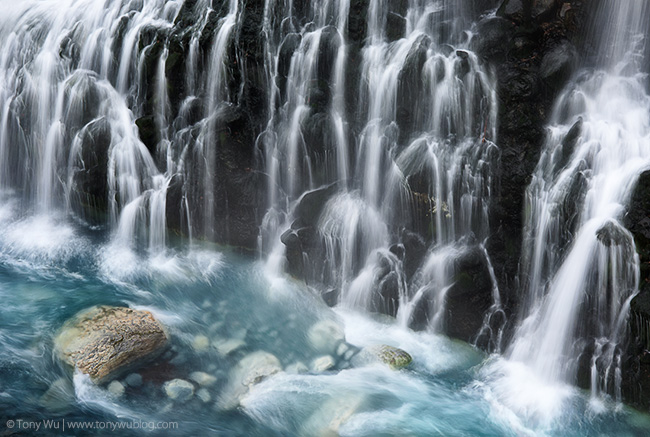
On my final day, before heading to the airport, I stopped off at another waterfall, where I made a friend. Or at least, I considered us friends, though I’m not entirely sure the sentiment was mutual.
I’m referring to the fellow (or gal?) below, a Japanese zarigani crayfish (Cambaroides japonicus), the first one I’ve ever seen:
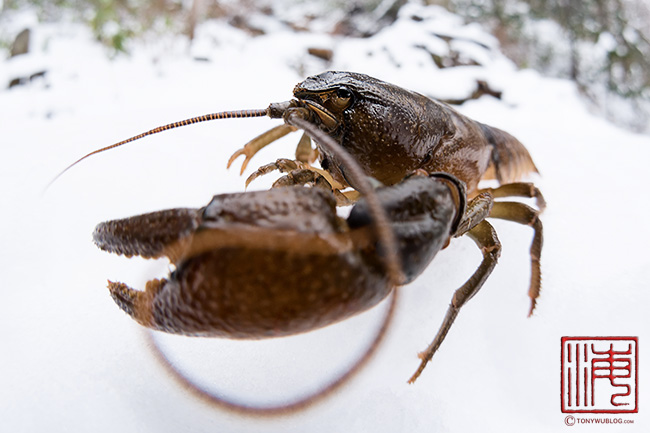
It was missing one claw, and was sort of stumbling in/ around/ under/ through the snow. Given how cold it was (less than 0ºC), I was surprised to find a cold-blooded crustacean ambling about, but apparently, they like cold areas. They are found only in Hokkaido and northern Honshu.
Sadly, their numbers are dwindling, as they require clean, clear, cold water, which means they are limited to places that people haven’t already screwed up.
People have also brought in a couple other species of crayfish from North America, which are bigger and more aggressive than this species, so the Japanese crayfish is being driven out by their kin (i.e., invasive species), as well as by humans. Sigh.
Incidentally, I photographed the zarigani with an Olympus OMD-E5, because that’s the camera I had with me.
I’m mentioning cameras because I’ve received a few emails recently asking me to recommend one camera vs another, which is first an impossible task given the number of camera models released to market every year, and second, in most cases for most people…choice of camera isn’t as important as how/ if you make use of it.
Just about any camera available today can produce excellent results.
So…get whatever model/ brand you like and use your equipment to the maximum. Learn how to use every available function. Don’t just stick it on automatic and expect the camera to do everything perfectly in all instances. Ain’t gonna happen.
Mini-rant over.
So here’s the waterfall where I found the zarigani. It’s called Fudou no Taki (不動の滝).
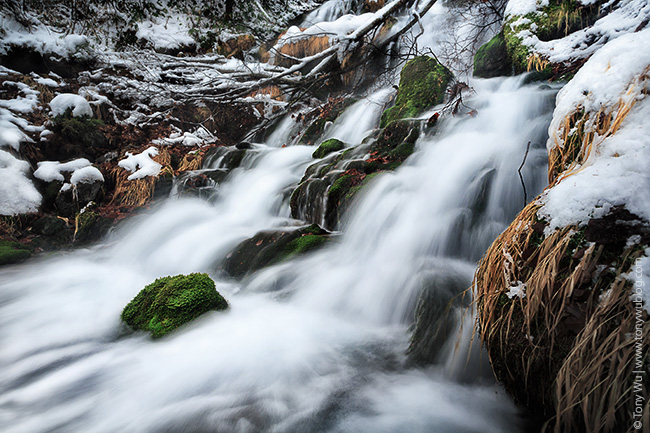
The sun did come out for (just) a bit, so I went back to take a look at blue pond, but it had frozen over, as any sensible body of fresh water in sub-zero temperature is apt to do.
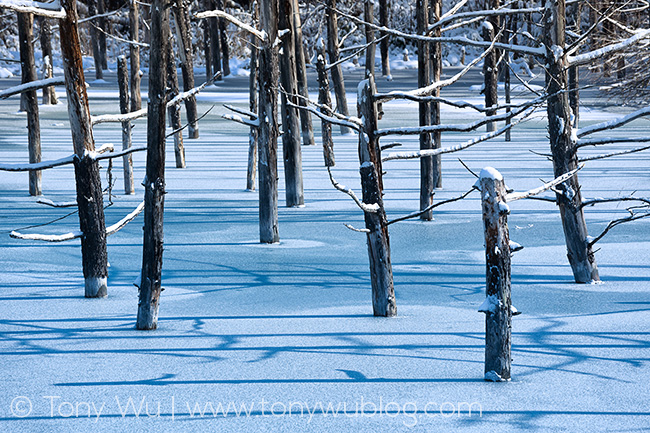
By the way, those trees growing in the middle of the water are Japanese larch trees (Larix kaempferi), called karamatsu (唐松). They are not native to Hokkaido, but were transplanted to the island because the trees grow straight, making the wood useful for things like constructing rail lines. They now dominate the landscape, at least around Biei.
Here’s another view of Shirahige no Taki:
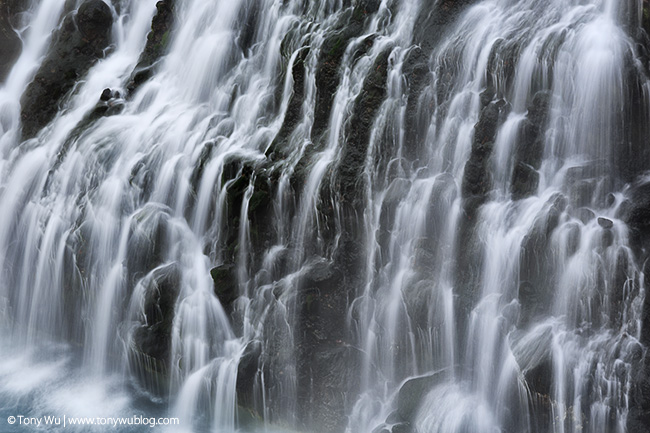
And to wrap up, here’s an accidental self-portrait of me wandering around looking at blue pond during the few hours of sunshine...accidental because I had no idea I had pressed the camera shutter.
